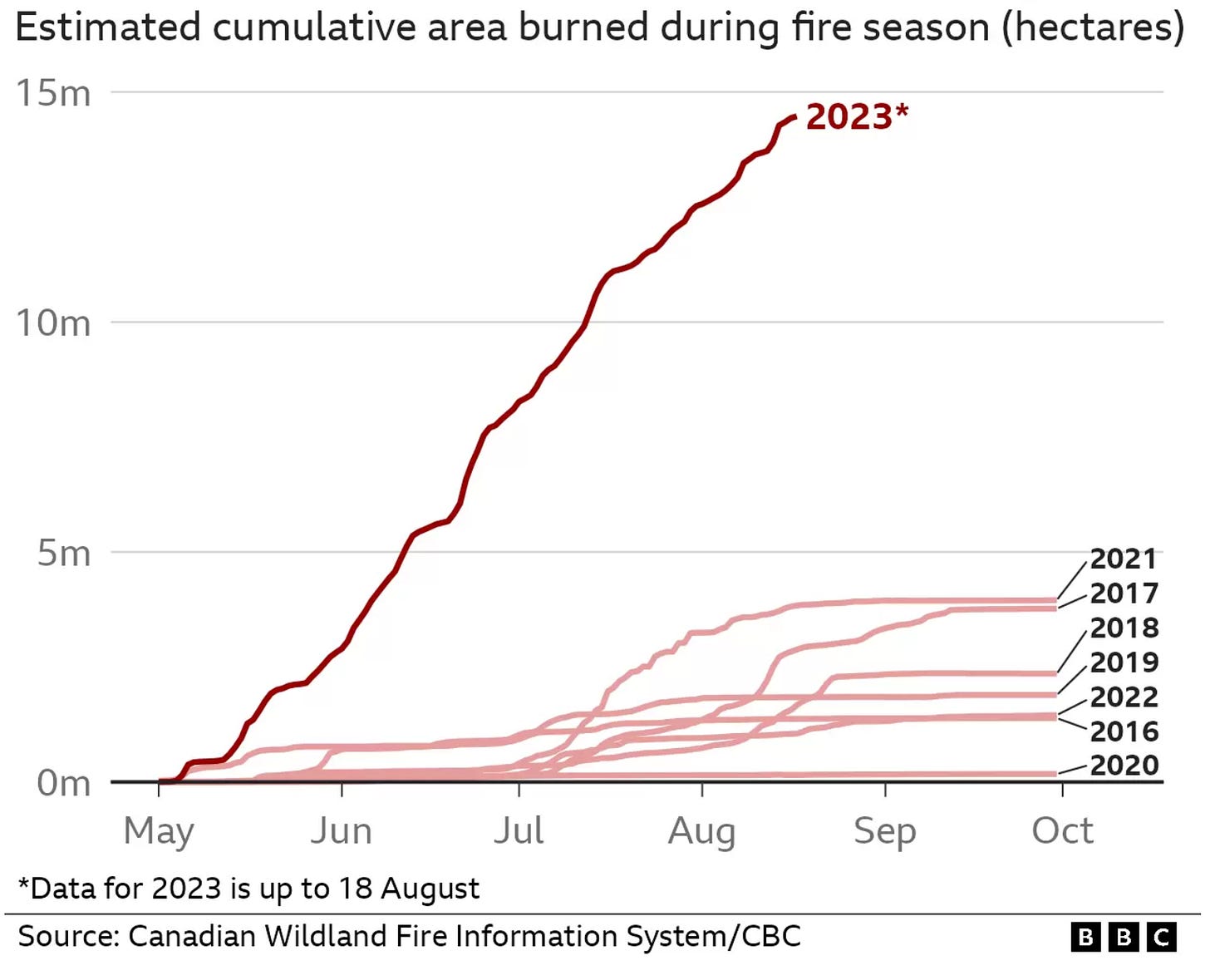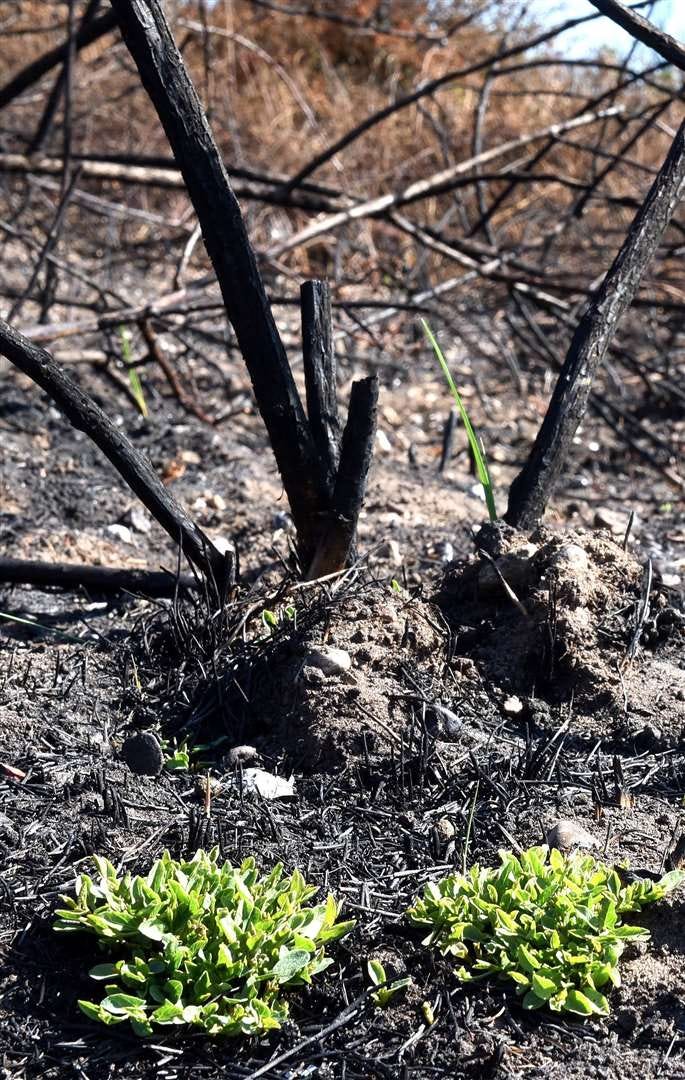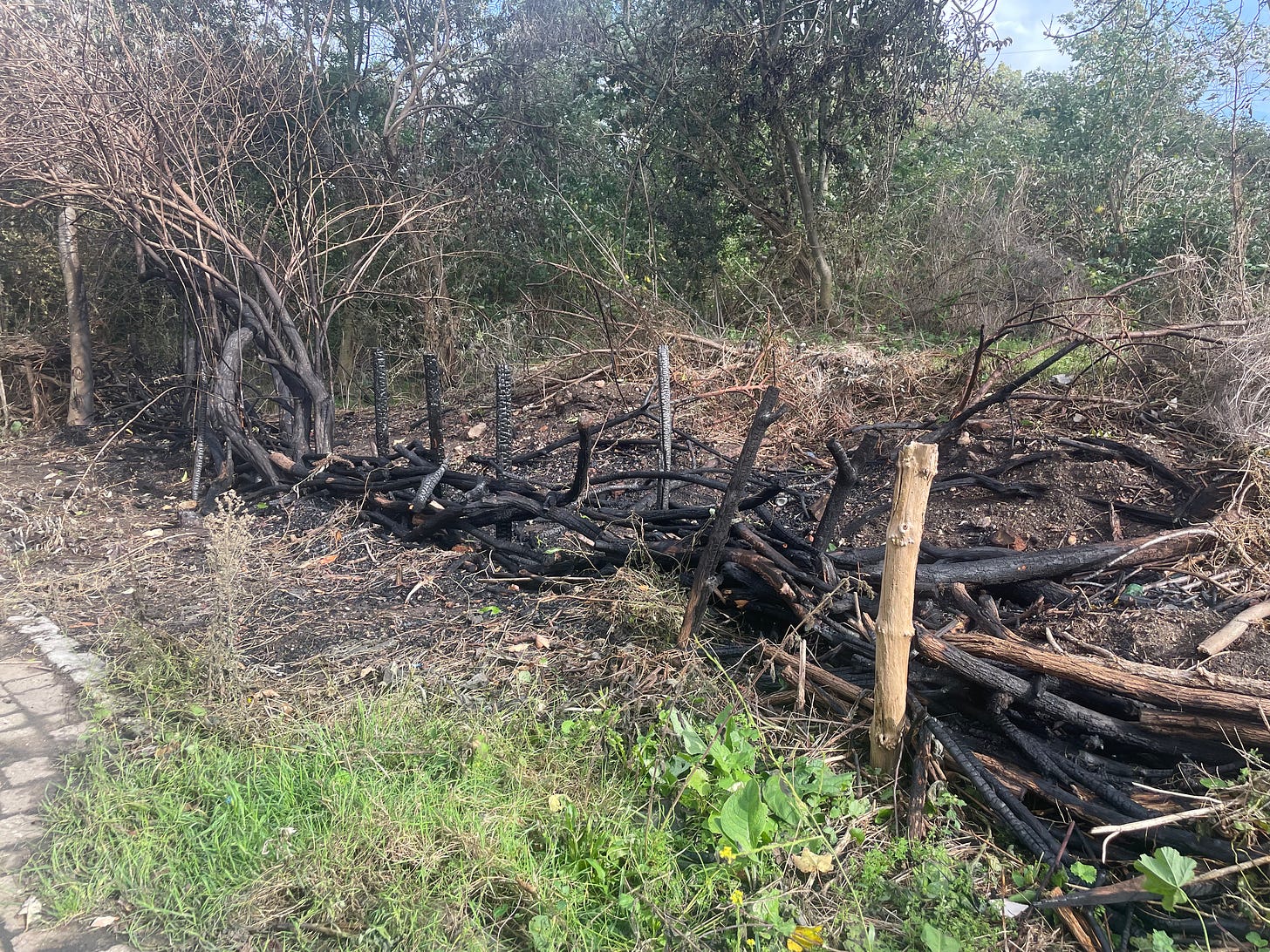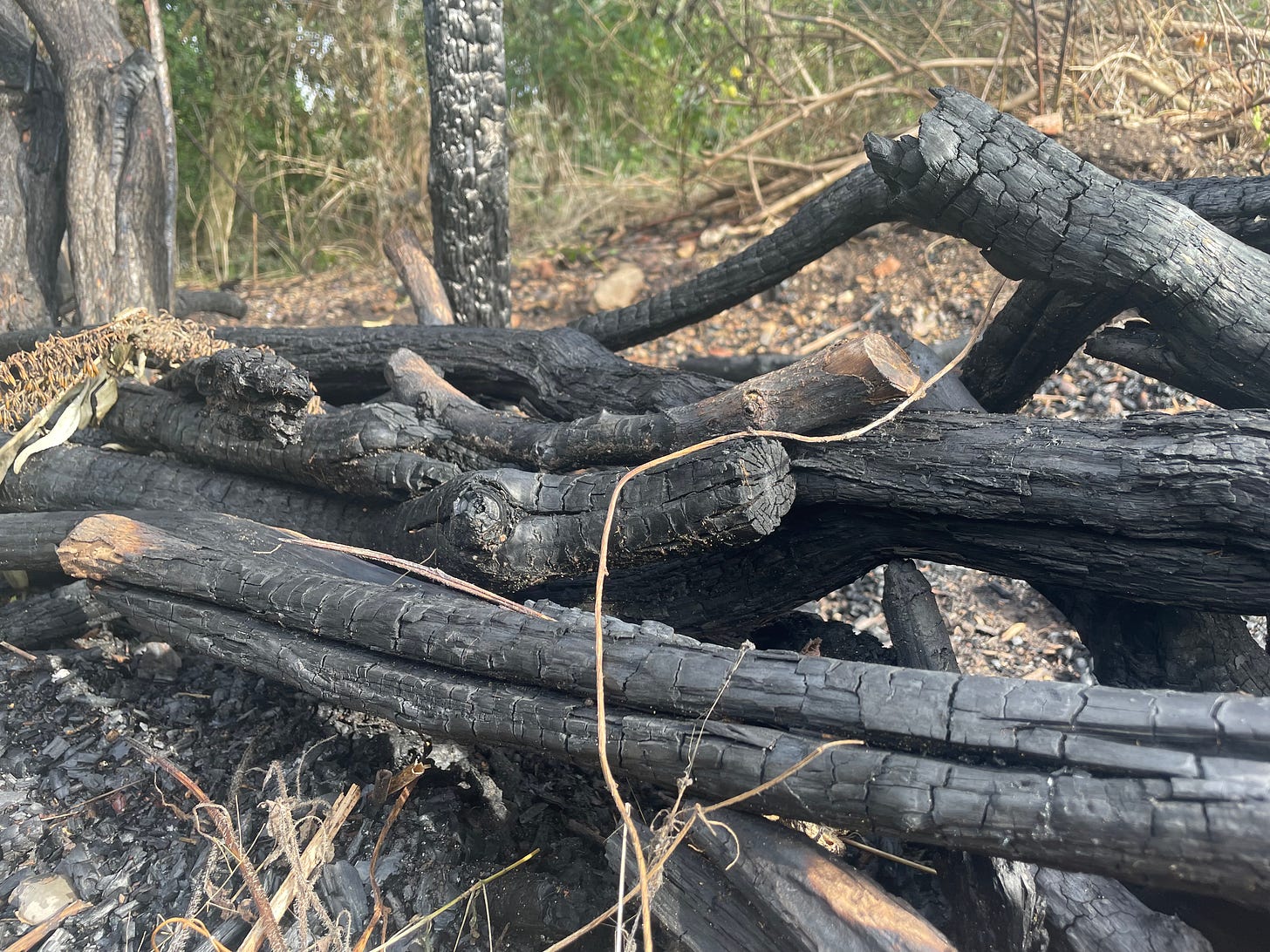From the ashes
Nature persists.
If you’ve been following Urban Nature Diary for a while, you’ll be familiar with the small nature reserve at the end of my road. I have tracked its process since work began earlier in the spring to remove the invasive knotweed. The transformation was shocking at first, but nature quickly bounced back and fell into its new rhythm of wildflower meadow creation.
But life is anything except easy, and this week it encountered a new obstacle.
Fire.
After an unseasonably hot start to October without much rain, the place was dry and brittle. It must have gone up pretty quickly. There could have been any number of causes - a discarded cigarette, the sun reflecting on broken glass just the right way to heat up kindling - and as much as humanity tries my patience I would like to presume nobody would do this deliberately.
But after I walked around the site and realised other hedges had been similarly burned, it quickly became obvious this was the result of arson.
Another day, another casualty in the war on nature, with zero benefit to the victor.
But fire is a part of the cycle of the universe. It destroys, but it also creates. I’m confident it won’t be long before new plants smother the blackened earth, taking advantage of the light, nutrients, and lack of competition from other flora. Especially now we’ve had a few days of rain to dampen everything.
Humans have been using fire to control life and land for thousands of years, and for many ecosystems fire is a natural part of the process.
Wildfires are common in parts of Africa, Australia, and North America. Some plants in wildfire-prone regions have developed adaptations to resist the flames, and even flourish in it. The Eucalyptus is one example of a pyrophyte (a plant adapted to fire), whose resin-sealed seeds require fire to break them open so it can reproduce. Other seeds will remain dormant in soil until a fire creates the exact combination of chemical balance and temperature they need to sprout.
These conditions are perfectly balanced. Like the acidity of our oceans, the chemical composition of our atmosphere, and the populations of species, the natural world has been ticking over nicely with every element working to do its part. Tip that balance, and the whole system is at risk of collapsing.
We’ve seen worrying signs of this system tipping with the increasing intensity of wildfires around the world. As global temperatures rise, the scale and ferocity of wildfires also rises. Canada had its worst wildfire season on record just this year.

The faster these conditions worsen, the more difficult it is for nature to adapt. With human-induced climate change accelerating, species no longer have hundreds of thousands of years to evolve to fill a niche like they have done throughout our planet’s history.
And things change closer to home, too. The UK - not exactly known for wildfires - experienced its own worst wildfire season in 2022 as temperatures broke records, destroying nearly 100 houses. Government figures revealed over 44,000 wildfires, an increase of 72% on the previous year. Earlier in the summer plans were unveiled to bring specialist Mediterranean-style wildfire fighting tactics to the UK, and the Fire Brigades Union suggests the UK is “woefully unprepared” for this particular front of climate breakdown.
One of the notable victims of the 2022 UK wildfires - and there were many - was the beautiful Wild Ken Hill, a rewilding site in Norfolk and home to several productions of the BBC’s Springwatch. A fire burned through 33 acres of the reserve, destroying flora, amphibians, reptiles, mammals, and ground-nesting birds.
An ecosystem not at all used to dealing with fire.
The cause of the fire is unknown, but “the fire has revealed the significant littering of aluminium cans and glass bottles in the area” according to Wild Ken Hill’s own site.
Alongside climate mitigation - reducing emissions to stop warming up the planet - adaptation is key. Over the coming years we will need to develop a keener sense of fire safety and methods to protect ourselves, our cities, and our nature.
This will involve not just the technical aspects of fighting fires, but addressing the root cause - the separation of humans and nature. Only by treating the natural world with respect will we be able to switch off the tap of pollution and begin to heal the damage we’ve caused.
Because it is possible. If given a chance, nature can recover.
Just a couple of months after the devastating fire at Wild Ken Hill in 2022, site managers found the shining emerald of new shoots emerging from the ash.
Life after death.
I look forward to finding the green shoots myself soon.





